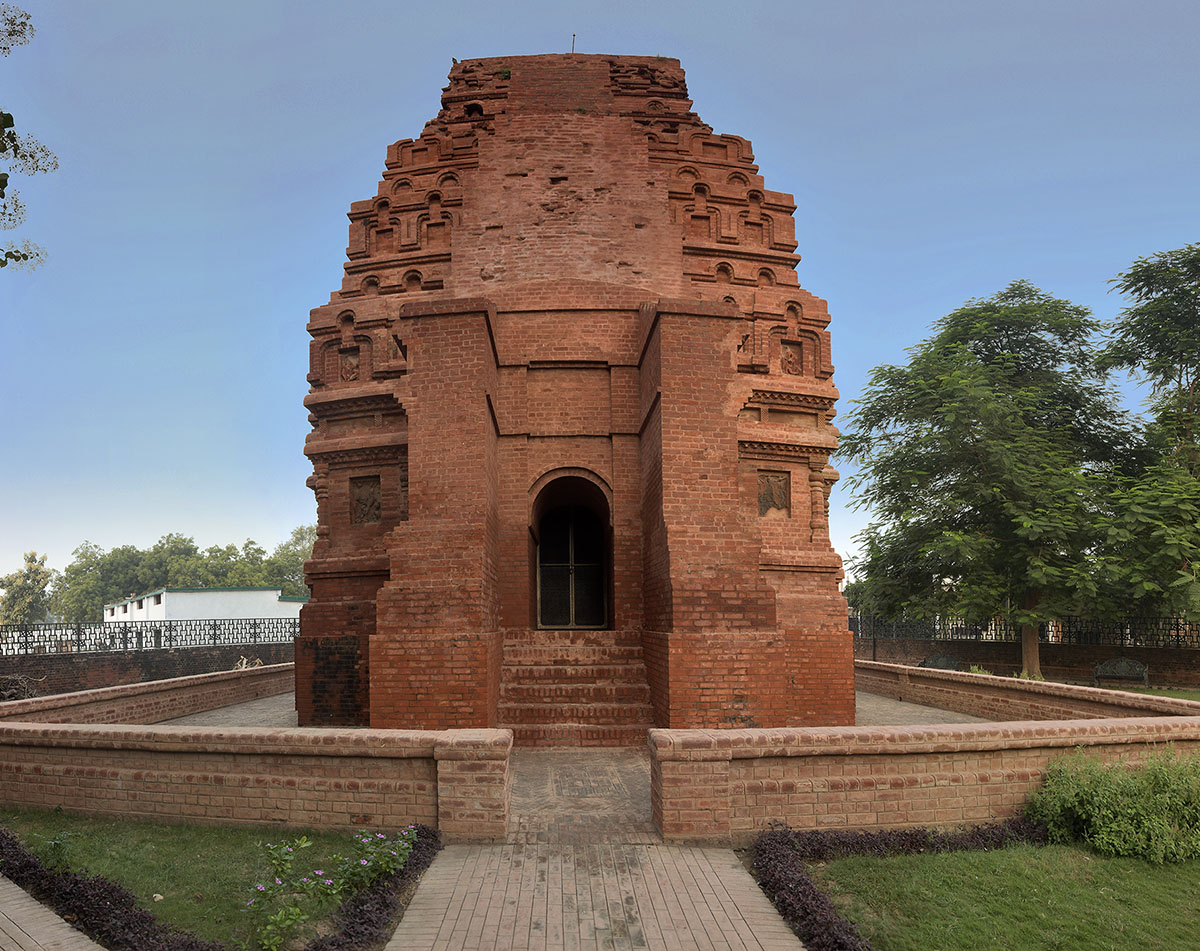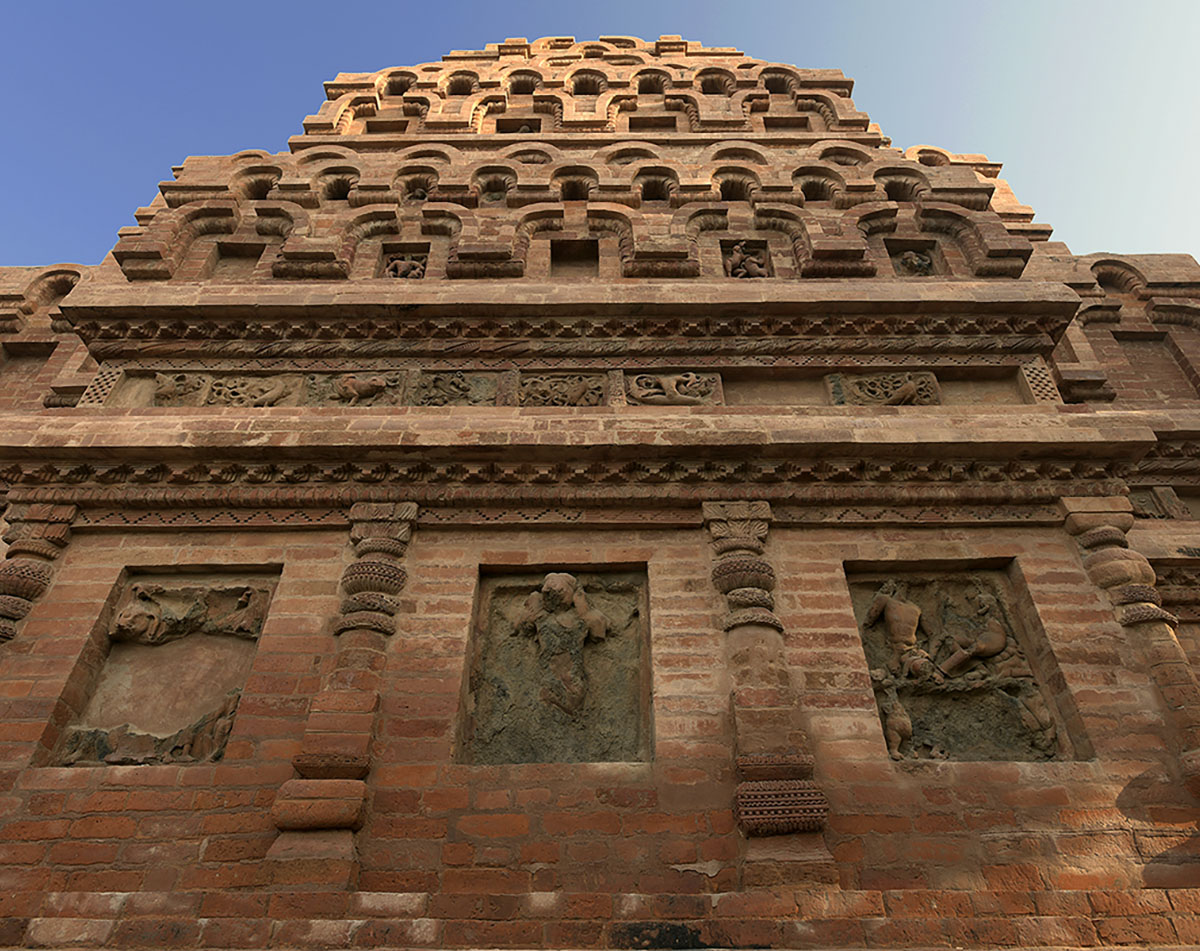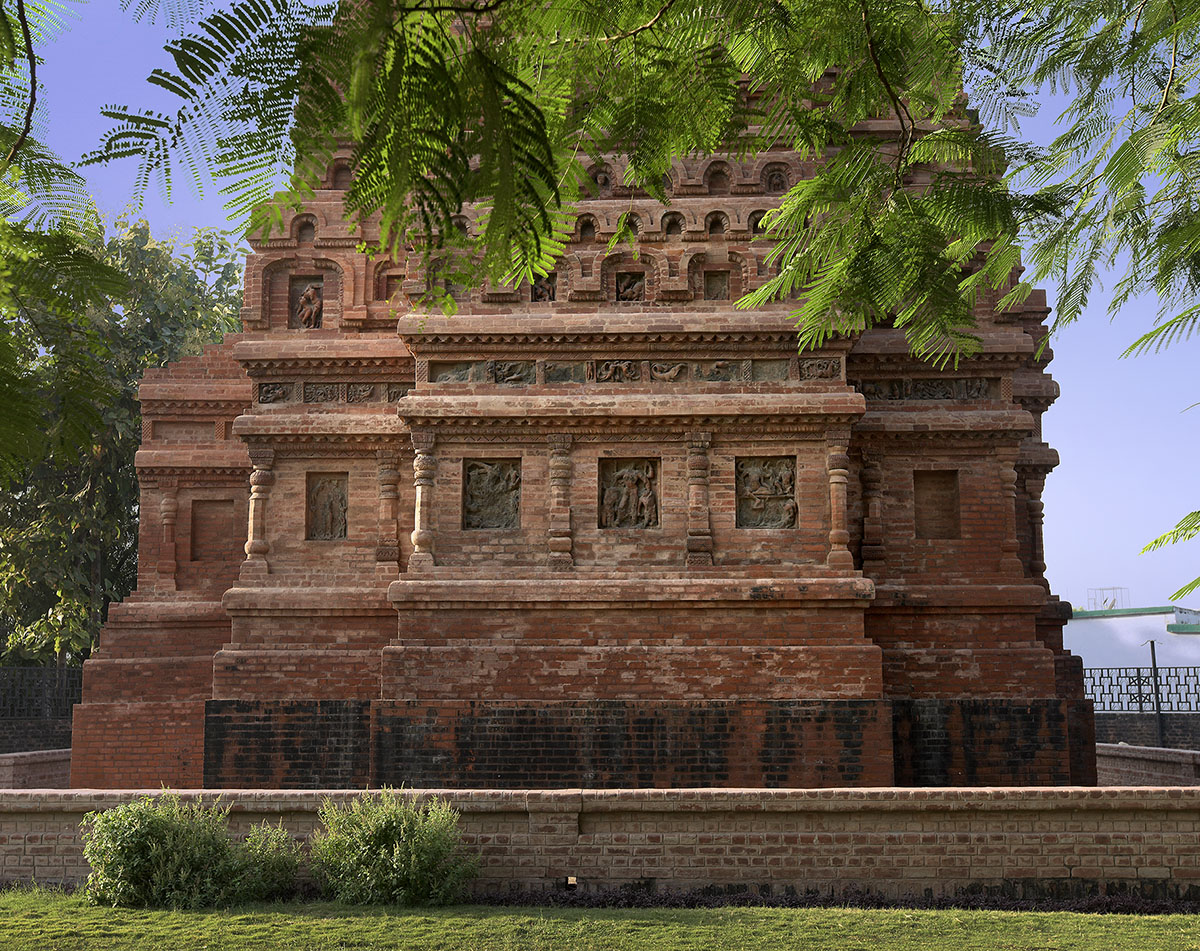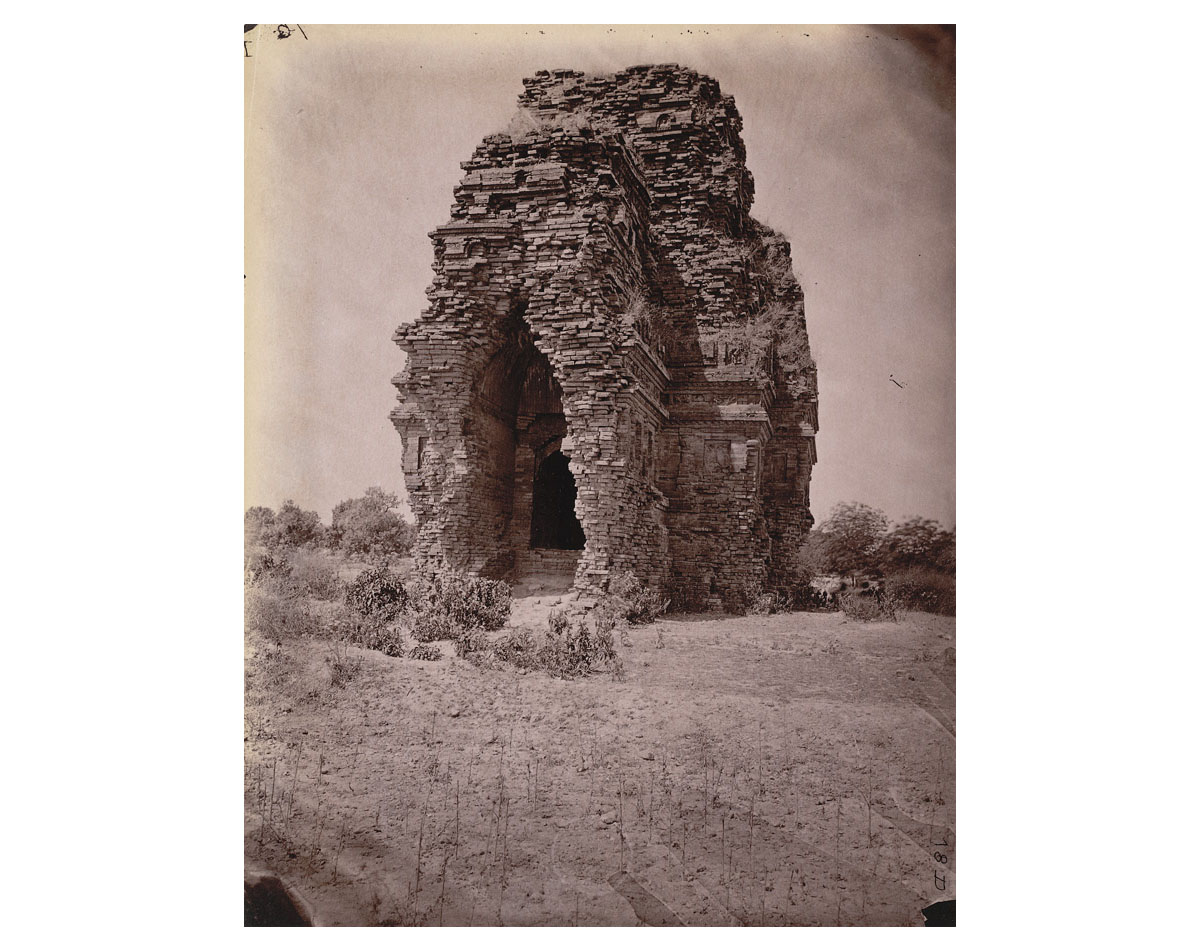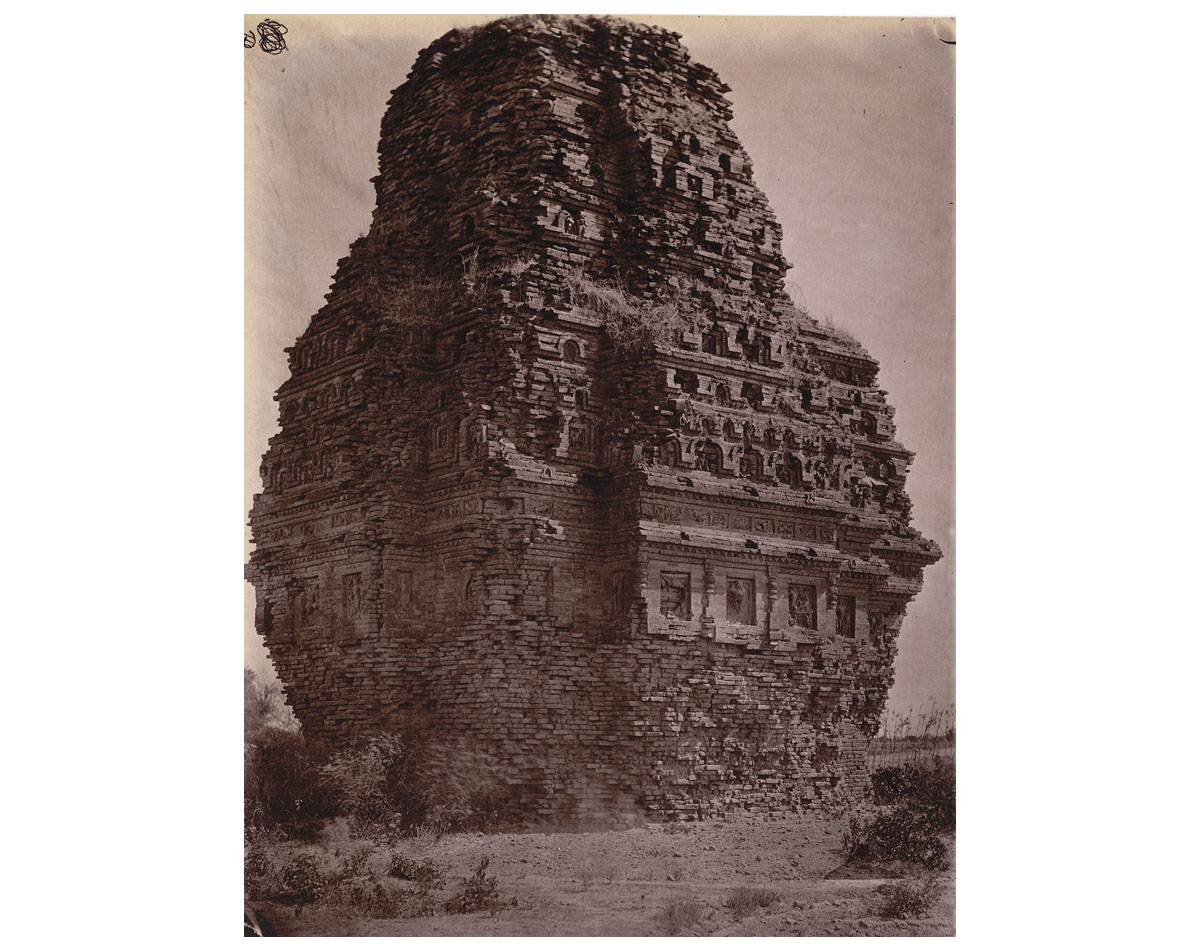ARTICLE
Bhitargaon Temple
Located in Kanpur, Uttar Pradesh, the Bhitargaon temple is dated to the reign of the Gupta Dynasty in the fifth century CE, and It is considered to be one of the oldest surviving examples of the Nagara style of temple architecture. The temple stands almost seventy feet in height with a tapering shikhara fifty feet tall — almost twice that of the base. It is constructed almost entirely from brick and mud mortar with detailed terracotta sculptures in the niches on the outer walls. The wide range of deities represented has resulted in some uncertainty about the dedication of the temple, but the sculpture of Varaha at the centre of the west wall has led scholars to conjecture that the temple was dedicated to Vishnu.
The temple consists of a main shrine that sits on a square foundation, opening to bay areas on three sides, forming a triratha. The entrance to the temple, facing east, was marked by a now-truncated porch with six steps. It is flanked on the right by the river goddess Ganga mounted on her vahana, the makara, along with two attendants, one of whom appears to be holding a lotus stalk and the other, a parasol. On the left is a figure of the river goddess Yamuna, believed to be the daughter of the Vedic god Surya and sister of Yama. The two panels are separated by smaller rectangular friezes running over the entrance with decorative designs of birds and animals.
Cavities on the underside of the brick archways, doorways and porch suggest that stone beams or lintels were used to form the temple frame. Beyond the entrance is a narrow passage or antarala roofed with semi-circular vaults. The antarala opens to an ardhamandapa, leading to the inner sanctum or the garbhagriha.
The roof of the temple is a high-stepped shikhara characteristic of the architecture of the Gangetic Plains in the fifth century, and may be seen as a predecessor to temple designs of the early medieval period. The pyramidal roof is composed of diminishing tiers of cornice mouldings piled one on top of the other and tapers towards the top. Each tier is decorated with the busts and heads of various mythological creatures emerging outwards from the chandrashalas.
Recesses or niches are carved on the exterior of the temple, interspersed with pilasters and cornices of carved brick. The sculptures and narrative relief panels placed in the niches were modelled in wet clay before they were baked. They are of three main types — large sculptures of individual gods and goddesses in scenes from mythology; plaques and bas-relief sculptures of animals and mythical creatures; and small friezes of mythological creatures.
The south wall of the temple is marked by panels depicting Shaivite myths, including a depiction of Shiva and Parvati on Mount Kailasa, where Shiva is seated in the ardhaparyanka or lalitasana pose with a lion’s head between his legs. Another panel on the south wall depicts a four-armed Ganesha with a plate of sweetmeats in his lower left hand while the index finger of his lower right hand is raised as if in warning. A number of other deities are represented, notably the four-armed Mahishasuramardini on the north wall and a centrally located figure of Varaha and a panel of the ashtabhuja Vishnu wearing a vanamala on the west wall. Other representations include those of Bhudevi, Krishna and Balarama, Sita and Ravana, Gajalakshmi, Vishnu with the ayudhapurushas, Gajantaka Shiva and Krishna killing the elephant Kuvalayapida.
Accessible only by canals and country roads, the Bhitargoan temple received little attention until Alexander Cunningham’s visit to the site in the nineteenth century; he is also credited with highlighting the temple’s position within the chronology of Indian art history. Today, much of the structure is in ruins, with the larger panels and the faces of the sculptures damaged beyond recognition. Some of the sculptures have been preserved at the Indian Museum at Kolkata. The temple has also diminished in size owing to the erosion of several centimetres of the brick over the years. It is a protected monument under the Archaeological Survey of India, which has undertaken several restoration projects of the temple since the nineteenth century, with some panels being completely replaced in the process.
Bibliography
Our website is currently undergoing maintenance and re-design, due to which we have had to take down some of our bibliographies. While these will be re-published shortly, you can request references for specific articles by writing to hellomapacademy@map-india.org.




